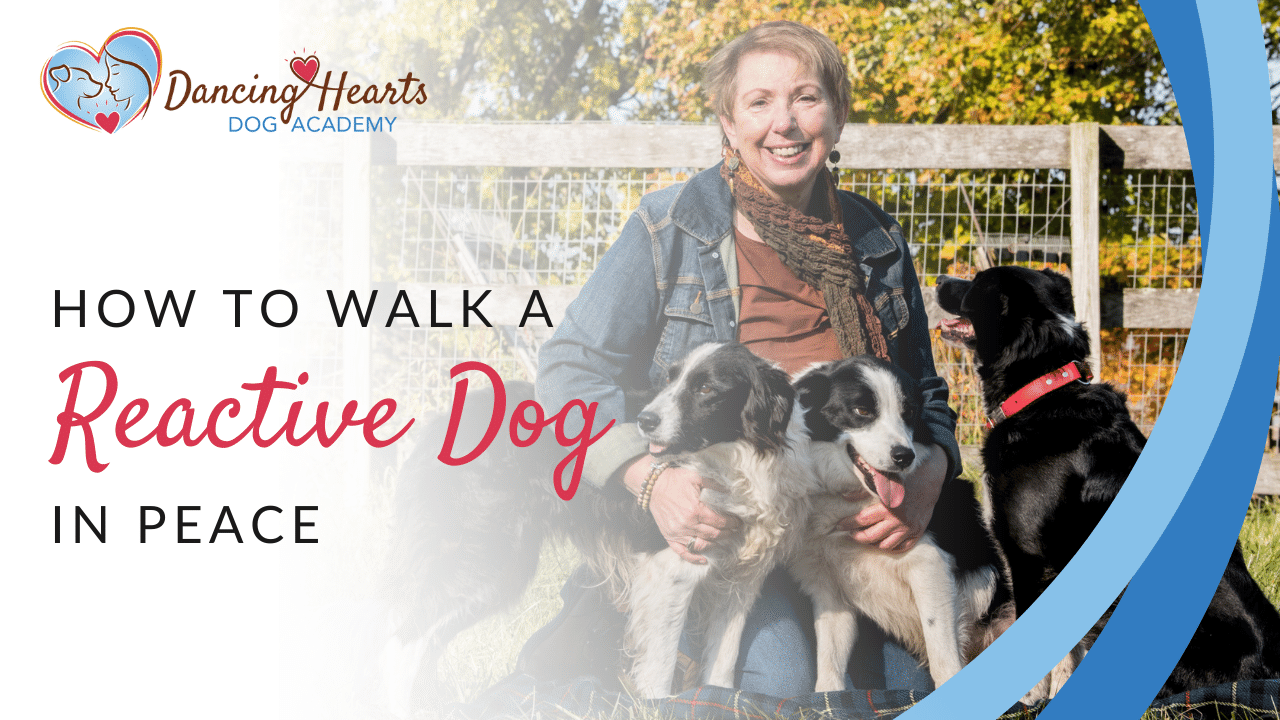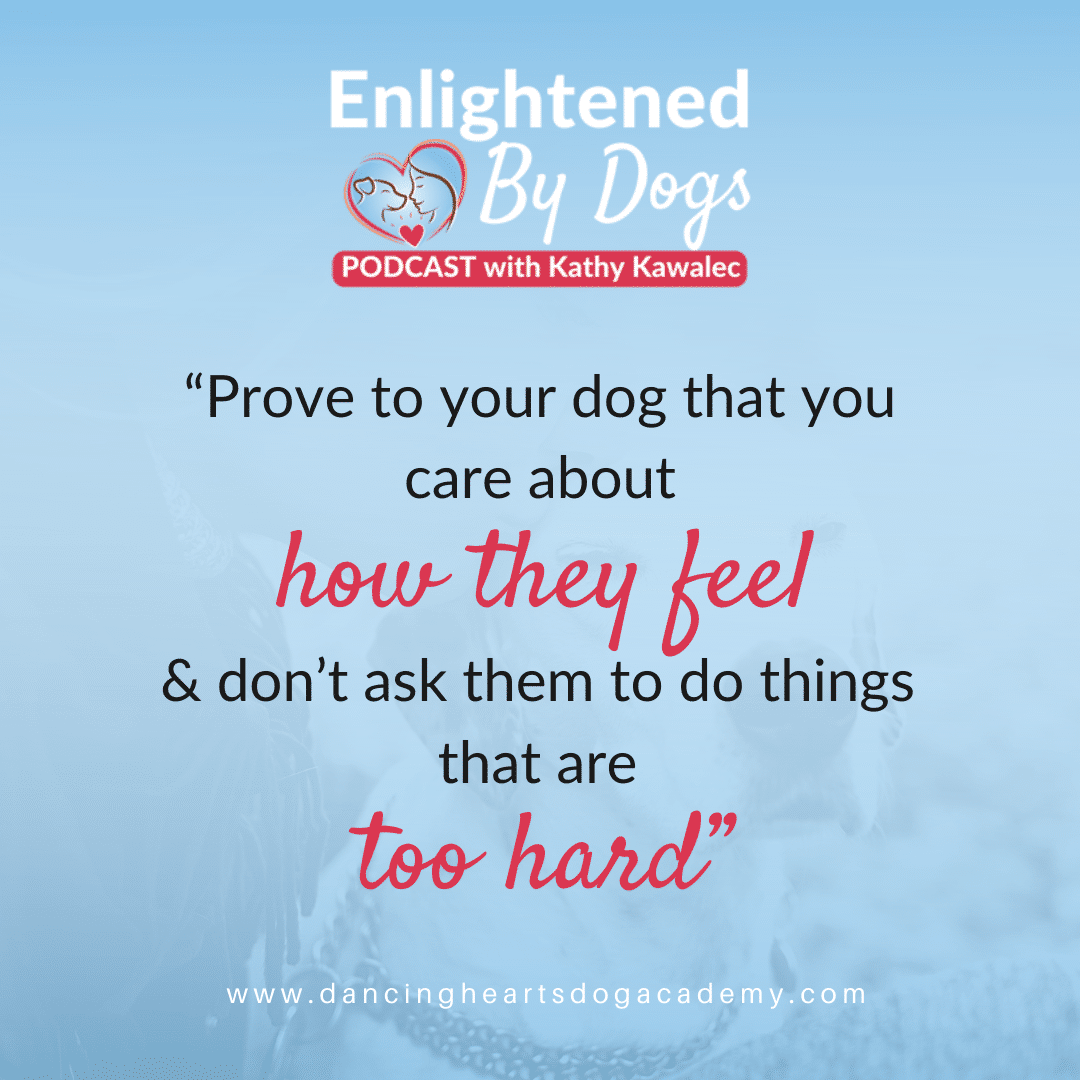Is your dog so out of control and/or reactive that you’re afraid to walk them on a leash?
There’s nothing more stressful than walking an unruly and reactive dog who could pull, lunge, or bark hysterically at any minute.
If you’re struggling with this problem with your dog, I want to help you change your story so that you and your dog can come together in a loving partnership. I’ve taken a few lessons from a recent coaching session I had with a lovely BPA member, who is having a hard time walking her very large and reactive dog!
I helped her discover the baby steps to help her get back to enjoying the dream life she wants to share with her wonderful dog. I believe that you can take all of these lessons and apply them in your own life with your dog, especially if your dog is difficult to walk with on the leash.
You’ll find out how to mentally prepare to walk your dog, how to avoid trigger stacking, and what to do in the moment when your dog reacts!
“Look at it from your dog’s perspective.”
The Arousal Protocol
So many people forget that their dogs are like toddlers in many ways. When your dog is stressed, fearful, or reactive, you must consider the Arousal Protocol.
A key lesson in that protocol is to remember that when dogs are reactive and over-aroused in some way, they need a cooling-off period. Toddlers need to take naps throughout the day in many cases, and it’s the same with dogs. Dogs need to rest, and if they don’t get enough sleep, they will act out somehow.
Please don’t make the mistake of assuming your dog is hyper because they need more exercise. Yes, your dog needs exercise, but they also need rest. A lack of rest and sleep can significantly impact a dog’s behavior. So, make sure that your dog has space and peace to sleep undisturbed. This is hugely important, especially if you have a reactive dog.
Stop putting your dog in uncomfortable situations
If you take your dog for a walk, and they become hyper-alert before the walk even begins, you might be tempted to turn back and go home. Walking a large and reactive dog with confidence can be difficult. You don’t know how they might react. You don’t know if they’ll pull you into a ditch or cause a huge commotion in the middle of a busy park.
So, what can you do in this situation to diffuse the tension and help your dog return to feeling safe, calm, and happy?
I suggest looking at the situation from your dog’s perspective. Why are they hyper-alert? Is it because they are uncomfortable with the situation? Maybe they are not comfortable around other dogs, or they’re triggered by moving vehicles. Whatever the case may be, take some time to really think about the situation from your dog’s point of view.
If you continue to take your dog to places and put them in situations that make them feel uncomfortable, their trust in you will fade. You must prove to your dog that they can trust you to keep them safe by taking them for a walk in places where they feel comfortable.
Show your dog that you care how they feel, and you’re not willing to put them into uncomfortable situations. Gradually, trust starts to build, and stress levels go down. Once this happens, your dog’s uneasiness will begin to decrease on each walk. They will look to you for leadership and guidance. You have proved that you can keep them safe, and you won’t put them in a situation that makes them feel threatened, unsafe, or uncomfortable.
Reduce stress and build trust
With trust between you and your dog, you can connect with them on a much deeper level. Stress can take over your dog’s thinking patterns to a point where they can’t think about anything else but the thing that is making them stressed. For your dog, that could be loud noises, other dogs, cyclists, cattle, and so on. By removing the source of the stress, otherwise known as the trigger, you can help reduce your dog’s stress-levels more and more each day.
You might not get huge results overnight, but that’s okay. Try not to put a timeline on this because that will only bring more pressure and stress to the situation. Take baby steps and create small experiences that you are fairly certain will be small successes. The more happy experiences you have with your dog, the more your dog’s confidence and trust in you will grow.
If you live in a busy neighborhood, you might have to get creative with where and when you walk your dog. Walk your dog at night if it’s always busy during the day. If the park is too busy, try taking a back road. Try walking your dog in the countryside where there isn’t much traffic or other dogs. It’s not always going to be easy, and it will take some effort and patience on your part, but it will be worth it.
Create an invisible bubble for you and your dog. Imagine that it’s you two versus the world, and you wouldn’t want any other partner to enjoy this crazy life with than the dog walking next to you.
If you have a very nervous and sensitive dog, walking for a long time might not be a good idea. You will need to give your dog more support when needed. In the early stages, you might leave the car and walk for a few minutes before returning. It was a short walk, but it was still an accomplishment for you and your dog to get that far.
“The longer we stay in the wrong environment, the more likely stress is going to build.”
What to do when your dog reacts
You can learn a lot from your thoughts and emotions. However, when your dog is reacting to a trigger, there isn’t much time for a life lesson. Maybe your dog had an incident, and you’re caught up in the moment right along with them. Your dog might need to do an emergency evacuation, and you just have to go with it.
When your dog reacts, you are your dog’s protector and lifeguard. You are the one who is responsible for their safety. This means you need to remove yourself and your dog from the stressful situation as soon as possible. But you need to do it with confidence. You don’t want your dog to see how stressed you are as it’s just going to add to their stress.
Following the incident, you might have thoughts looping in your head. While you can turn events into important life lessons with your dog, it is not good for either of you to get lost in negative thoughts.
As your bond with your dog grows, you will find it much easier to recover when things like this happen, but it takes practice!
If you’d like to work with me and learn how to create a partnership lifestyle for you and your dog, you can request an invitation to join us in the Brilliant Partners Academy when the doors open for the next enrolment!
You can listen to everything I talked about in this blog post over on my podcast – Enlightened By Dogs. It’s episode 138, which you can listen to here.






